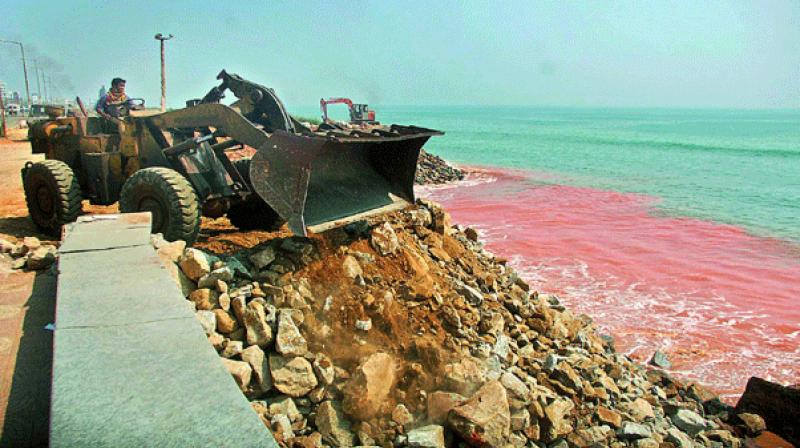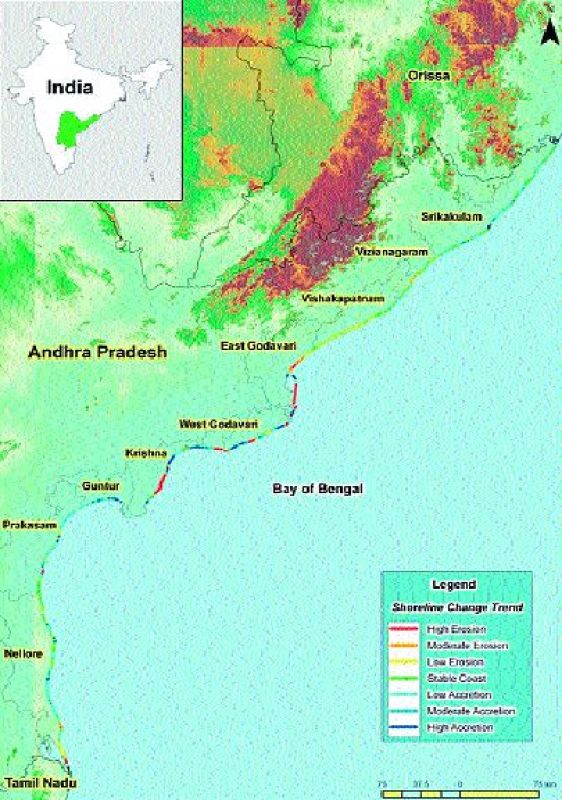Andhra Pradesh coast faces erosion; East Godavari, Vizag most affected
Srikakulam is the only district in the state that shows the maximum accretion.

Visakhapatnam: Around 275 km of coastline of the total 974 km along Andhra Pradesh is subjected to erosion over the years. Analysis of long and short term shoreline changes along Andhra Pradesh coast using Remote Sensing and GIS techniques done by researchers of Chennai-based National Institute of Ocean Technology (NIOT) revealed that 275-km shoreline was under erosion, 417 km has shown accretion and 153 km coastline is under stable condition. East Godavari and Visakhapatnam districts show high erosion.
Srikakulam is the only district in the state that shows the maximum accretion. Also 49 km of shoreline in Srikakulam district falls under stable category. 75 per cent of the coast from Ichchapuram to Kongavanipalem was observed with sand dunes and sandy beach, and analysis reveals that the coast is in a stable condition.
The southern coast, which is from Nellore to Sriharikota, is mostly stable or accreting nature. Further in northern parts, Ichchapuram to Beemunipatanam coast does not depict any significant change as it is covered with sand dunes and sandy beach. Andhra coast is known for diverse coastal geomorphic features like deltas, dune system, rocky cliff, red sediments, beach rock etc.
“East Godavari and Visakhapatnam districts show high erosion. More than 50 per cent of shoreline in both districts exhibit high erosion. In East Godavari district, high erosion was observed in the coastal stretch between Uppada and Kakinada. From Kakinada to Machilipatnam, both erosion and accretion was observed in many places; however results are largely influenced by Godavari and Krishna river course. In Visakhapatnam district, major erosion prone area is Beemunipatnam. Even though the coastal stretch between Beemunipatnam and Visakhapatn-am consist of well developed dunes, some pockets in this stretch are showing erosion,” stated the study conducted by R.S. Kankaraa, S. Chenthamil Selvana, Vipin J. Markosea, B. Rajana and S. Arockiaraja of NIOT.
In Nellore district, 53.64 km of shoreline shows erosion pattern and 83 km of shoreline comes under accretion. In Prakasam district, erosion is less and a major part of coastline, 62.66 km, exhibits accretion pattern. The entire coastal stretch of 32 km of Guntur district falls under accretion category. In West Godavari district, shoreline erosion and accretion are equally distributed.


